Ukulele Care and Maintenance
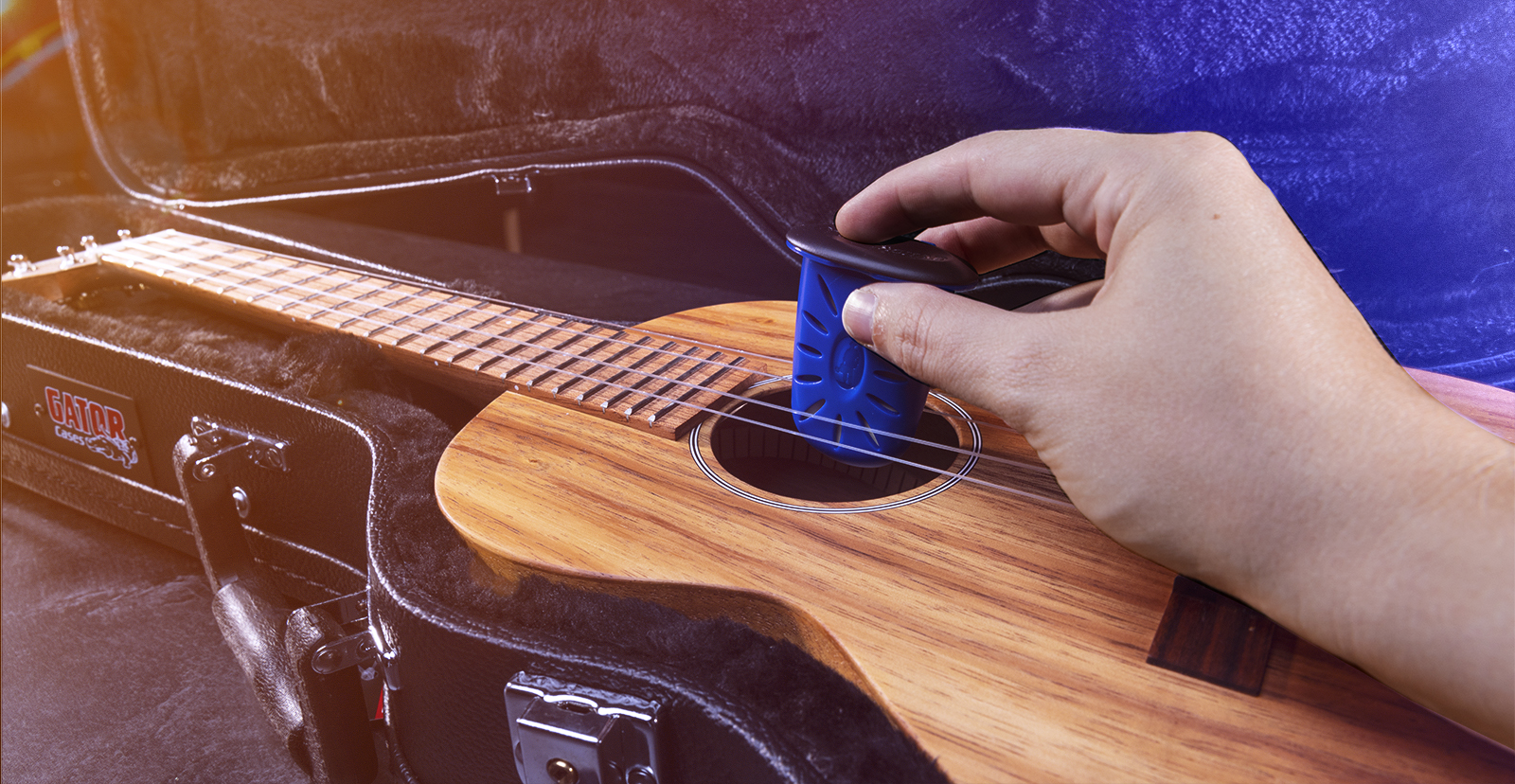
Whether you have an inexpensive beginner ukulele or a master-grade professional ukulele, it’s worth caring for so that it brings you years of enjoyment.
In this guide, we will show you how to care for and maintain your ukulele. You will learn how to keep it safe during temperature and weather changes, how to keep it looking good and sounding great, and how to change strings when needed.
- The Best Way to Store Your Ukulele
- Temperature and Humidity Are Key
- How to Clean a Ukulele
- Restringing a Ukulele
The Best Way to Store Your Ukulele
Ukuleles are a lot of fun to have around the house. They are also delicate musical instruments crafted from thin-carved pieces of resonant wood glued together and holding up under the tension of the strings. Don’t leave your ukulele lying around on a table or a shelf where dust or dirt can build up on it or where a careless child or family pet could knock it off or crush it. Invest in a quality ukulele case or padded gig bag and place the instrument back in the case whenever you are not playing it.
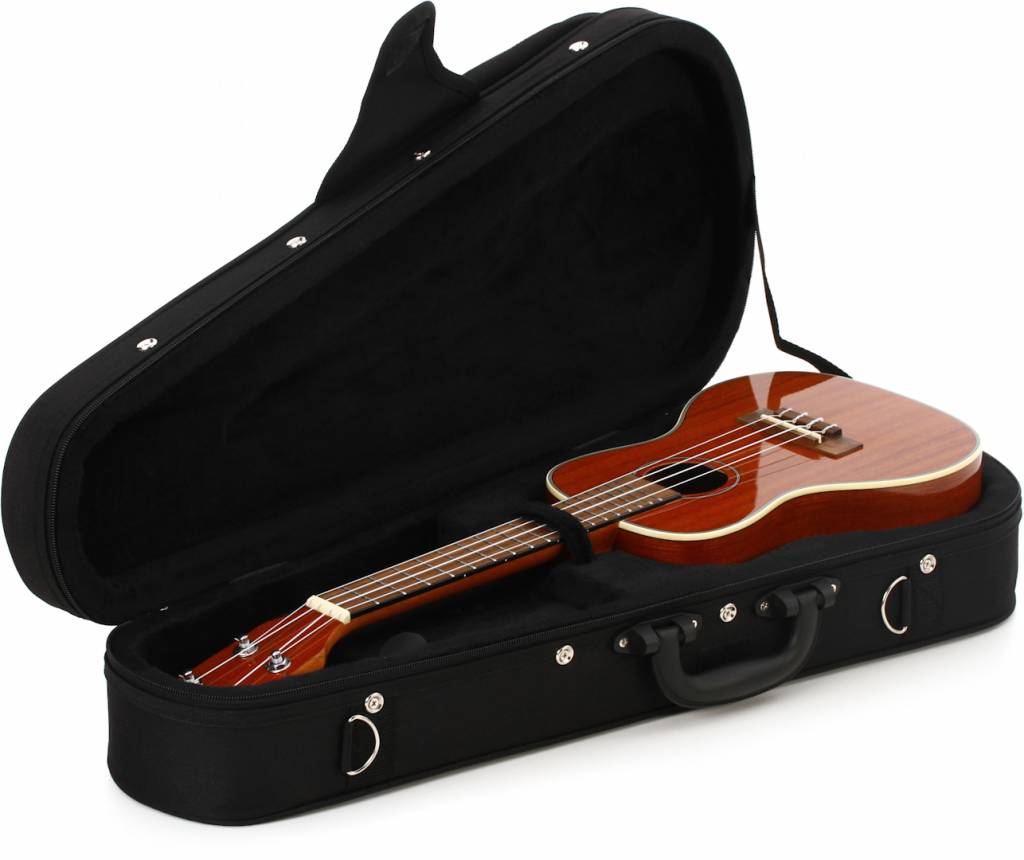
A concert ukulele in a foam hardcase
Make sure you buy one appropriate for the size of your instrument: soprano, concert, tenor, or baritone ukulele.
Hardshell cases provide the best protection for your fragile ukulele, whether you are transporting or storing it.
A ukulele gig bag is also adequate for casual use as long as it contains ample foam padding. The best gig bags have a reinforcement block to support the neck and headstock to protect them from breaking.
Cases and gig bags also provide all-important compartments where you can keep essentials, like a spare set of strings, a guitar string change kit, a clip-on tuner, a ukulele strap, a polishing cloth, and a guitar humidifier. We will say more about these later.
Please pay attention to the next section on Temperature and Humidity, because how you store your ukulele just as important as what you store it in.
Temperature and Humidity are Key
As we mentioned, your ukulele is fragile acoustic instrument. Because the top, back, and sides are made of thin-carved plates of wood, they can suffer damage from dramatic changes in temperature and humidity.
Exposed to temperature and humidity extremes, the ukulele’s wood will expand or contract, dry out, and crack. A neck can warp, changing the action of the strings, making the ukulele buzz or less able to play in tune. The glue holding internal braces and joints in place can work loose, and the ukulele can begin to fall apart. The bridge can pull up and work loose and even pop off. Repairing these problems is expensive.
Protect Your Ukulele from Temperature Extremes
A simple rule is to keep your ukulele in the same environment that you keep yourself and your family in. You need heating in the winter and air conditioning in the summer. When you transport your ukulele, don’t ever leave it in a car in the summer. The heat that builds up can literally cause a ukulele to come unglued.
Never store a ukulele in an attic, a basement, or a shed outside your house. One season of storage in extreme heat or cold can ruin it.
Maintain Consistent Humidity
Apart from temperature, there’s humidity. You may not be aware of how widely the humidity swings from season to season inside your home. Now that you own a ukulele, you need to know. Get an inexpensive humidity meter (hygrometer) that displays humidity as a percentage.
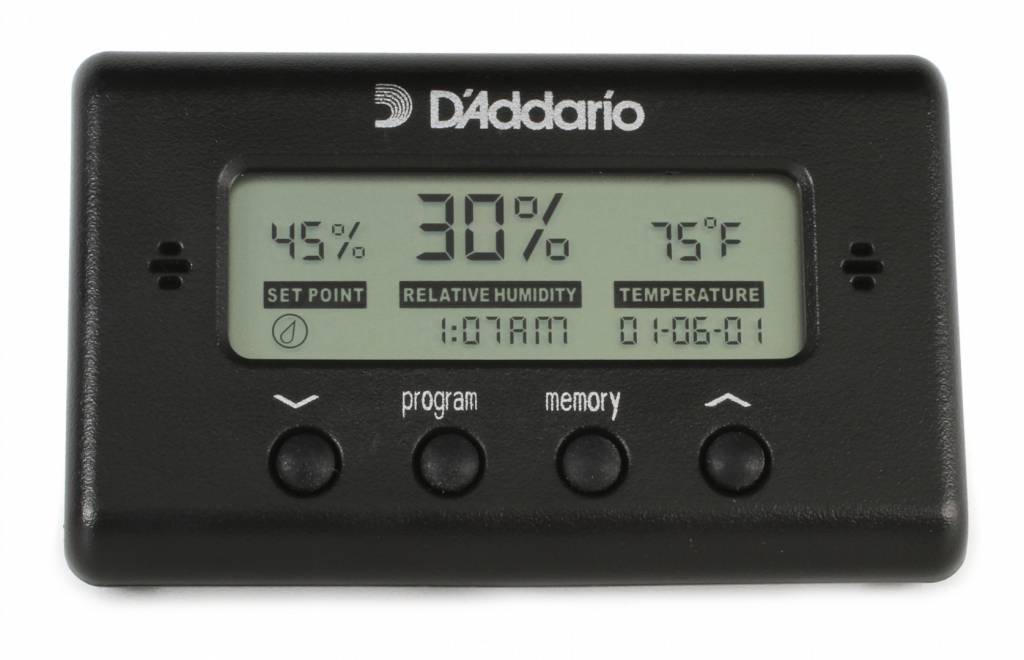
A humidity meter, or hygrometer, that fits inside your ukulele case
If you live in a climate where humidity varies widely, you need to take measures to protect your ukulele.
A ukulele, like a guitar, should be kept in humidity between 40% and 50%. Outside of that, your instrument may suffer damage, particularly in low humidity. In deserts and in northerly climes during the cold months, humidity will drop to well below 40% indoors. That’s when the wood in your ukulele can dry out and crack.
During those months you need to humidify your ukulele whenever you are not playing it. You do this by putting it back in the ukulele case or gig bag with a guitar humidifier, which is a holder for a small sponge that you moisten with water every few days.
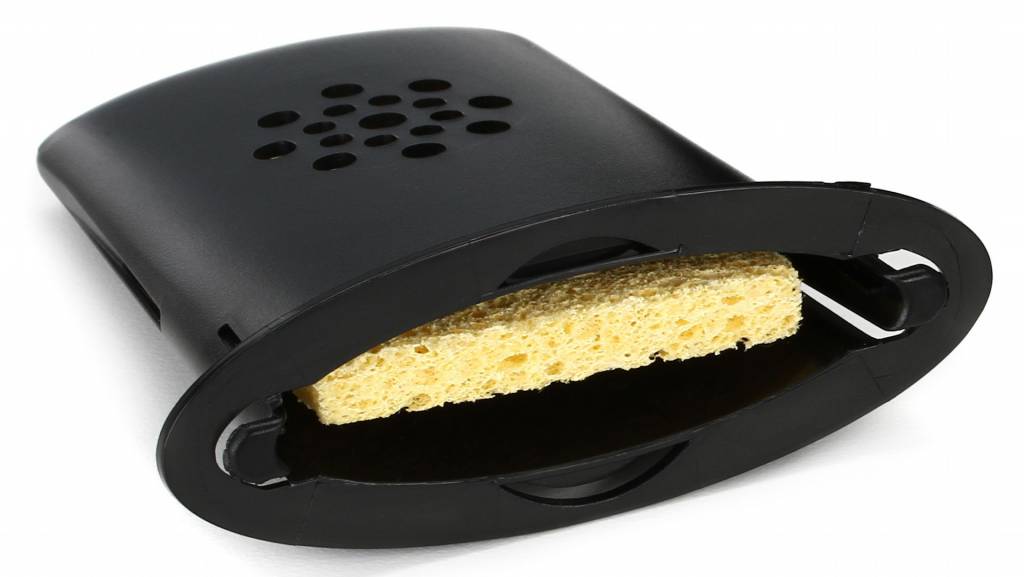
A guitar humidifier holds a sponge which you moisten with water every few days
The water evaporates slowly and keeps the ukulele humid. Keep your humidity meter in the case. Check the readout periodically and make sure the humidity stays above 40%.
For more details on how humidity affects your ukulele, check out this inSync article. Everything that applies to an acoustic guitar applies to a ukulele as well.
If your ukulele ever shows cracks or warps from temperature and humidity, it may not be done for. Take it to a qualified guitar repair person (a luthier). Your repair person can also give your ukulele a setup, adjusting and calibrating the parts of the instrument for optimal playability in response to the changes it has experienced.
How to Clean a Ukulele
Cleaning your ukulele not only keeps it shiny and new, but it can prolong the life of your strings and prevent your tuning machines from tarnishing or prematurely aging. Here are some solutions.
Daily cleaning practices
Start by washing your hands before you play. Our fingers are covered in dirt, oils, and sweat, but our ukuleles don’t have to be.
Wipe off your ukulele with a polishing cloth after playing it. Wipe down the strings and fingerboard. Then put it back in the case.
Fretboard maintenance
When you replace the strings every six months or so (explained below), that’s the time to apply lemon oil or fretboard conditioner. It keeps your ukulele’s fretboard hydrated. Your fretboard is unfinished wood which can dry out and crack, and that can also cause problems with the frets. Wipe on some fretboard conditioner and your fingerboard will be clean, lustrous, and happy.
Polishing the finish
Take a dry microfiber cloth and brush off any dirt, dust, or fingerprints first. If your ukulele has a glossy finish, you can spray a little guitar polish onto a cloth and lightly wipe down your ukulele’s top and sides from time to time. If your ukulele has a matte or open-pore finish, don’t use guitar polish, just wipe it down with a dry cloth.
Restringing a Ukulele
You will need to replace a string if it breaks. But you will want to replace all the strings about every six months, when they get to the point that the sound has become dull or the strings won’t stay in tune. You can take your ukulele to a local store and pay them to change the strings, but doing it yourself isn’t that difficult.

A set of replacement strings for a tenor ukulele
When you are replacing the whole set, you should remove all the strings at once and clean and oil the fingerboard before you restring, as we explained above.
It’s a good idea to learn how to replace a string yourself in an emergency. Keep a new package of strings in your ukulele case, along with a guitar string winder, a small wire cutter, and needle-nose pliers to grip the string while you tie a knot in it.
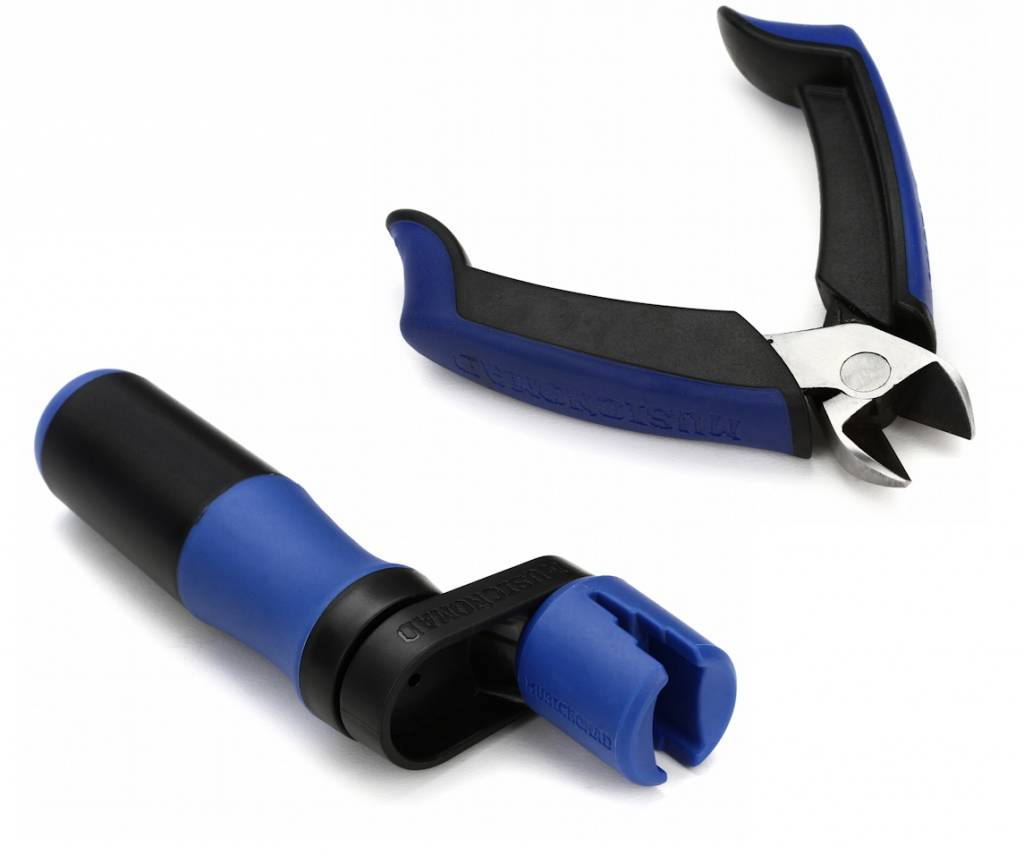
A string-changing kit includes a string winder and a wire cutter
How to replace the strings depends on the type of bridge on your ukulele. There are three types: tie block, slotted, and the less common pin bridge. The method for attaching the strings to the bridge is different for each.
Ukulele strings are stretchy and made of nylon. After you put on new strings, you need to carefully stretch them. They will require frequent re-tuning until the strings settle in.
Here’s a video that demonstrates how to restring your ukulele.
Here’s our Sweetwater guide for tuning your ukulele.
Keep your ukulele happy and healthy, and it will reward you with years of musical fun.
When you need help, Sweetwater has the answers!
Our knowledge base contains over 28,000 expertly written tech articles that will give you answers and help you get the most out of your gear. Our pro musicians and gear experts update content daily to keep you informed and on your way. Best of all, it’s totally FREE, and it’s just another reason that you get more at Sweetwater.com.


